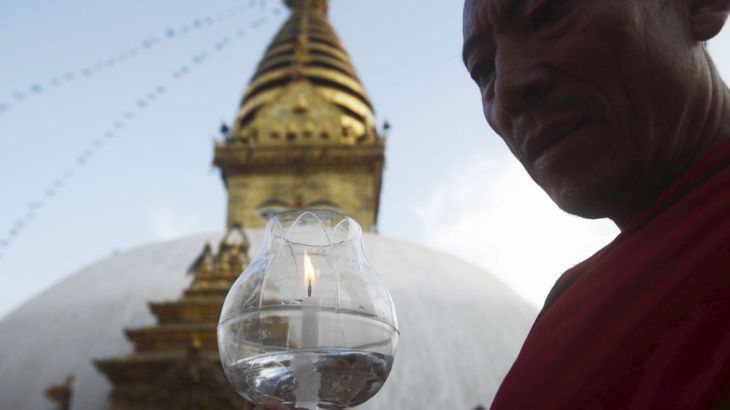Reopening Nepal’s heritage sites
The Nepalese government has reopened heritage sites to visitors following the earthquake that shattered the country.

Nepal, Kathmandu – In Kathmandu, the most visible scars of April’s earthquake are the heritage sites.
Temple after temple fell down here, more than 700 of them. When the international media arrived in Kathmandu, they showed the wreckage in the damaged squares.
Keep reading
list of 4 items‘Mama we’re dying’: Only able to hear her kids in Gaza in their final days
Europe pledges to boost aid to Sudan on unwelcome war anniversary
Birth, death, escape: Three women’s struggle through Sudan’s war
In the minds of onlookers, Kathmandu had become a pile of rubble. Even our first reaction was to go to these sites, symbolic and dramatic as they were.
But most of the city still stands. Only 14 of 75 districts have been affected by the quake. And in a country which relies on tourism for more than three percent of GDP, visitor numbers plummeted.
Now the government has reopened heritage sites to visitors. From women selling trinkets to the coffee shops, everyone awaits tourists. A few tourists trickle in and take pictures of the damaged palaces and temples.
Residents take selfies amongst the ruins and move on. Between cordoned-off areas and a tented camp of temporary classrooms, children walk around, holding hands and eating ice cream.
While this could appear as a return to normalcy for the tourists, conservation and safety are serious considerations.
In Swaymbhunath, the oldest temple complex in Nepal dating back to the 5th century, sections of the complex have not yet been secured. Centuries-old mud and stone temples damaged by the quake are still exposed to the elements. Broken structures hang dangerously above statues.
Thirty-three of the thirty-six houses of priests and residents have been totally destroyed. Residents are in no position to keep a vigil over the temple’s valuables. And even this complex has been declared open.
The government has said that only some sections of the heritage sites are open. Tourists have been asked not to wander around by themselves and have even been given helmets to visit some sections of the 16th century palace in Kathmandu Durbar Square. Officials say that tourists will learn about disasters this way.
Conservationists allege that pressure from the business community has forced the government to open these temples sooner rather than later. Even the department of archaeology does not deny this.
But locals are keen that the government and UNESCO are fulfilling proper rites while securing and renovating temples. Nepal has a living culture in which the monuments are places of worship. Many believe that the gods need to be appeased and they want to ask for forgiveness.
And while the state is keen to open the sites for tourism and get back to business, locals hope that they don’t alienate the gods in the process.